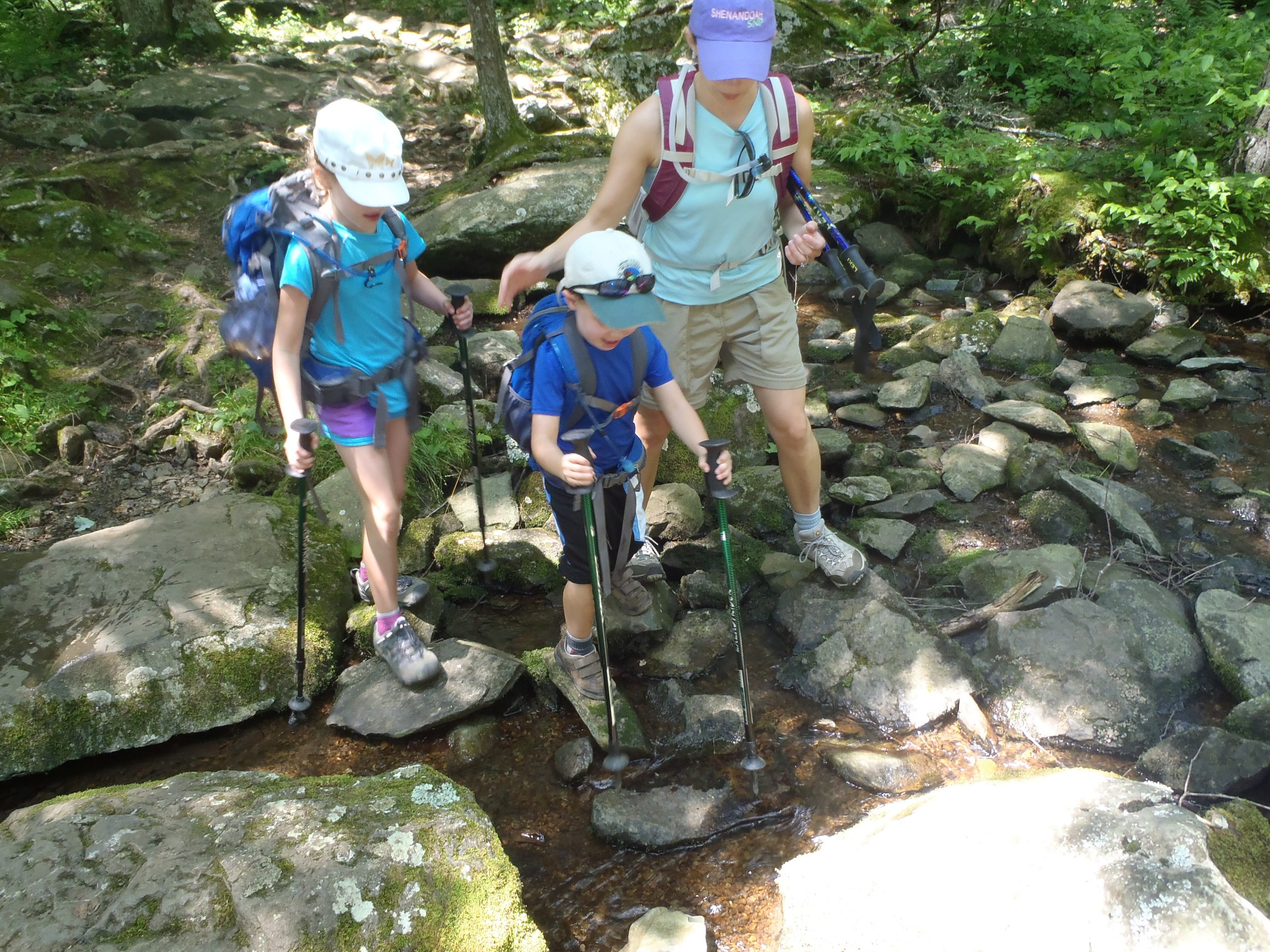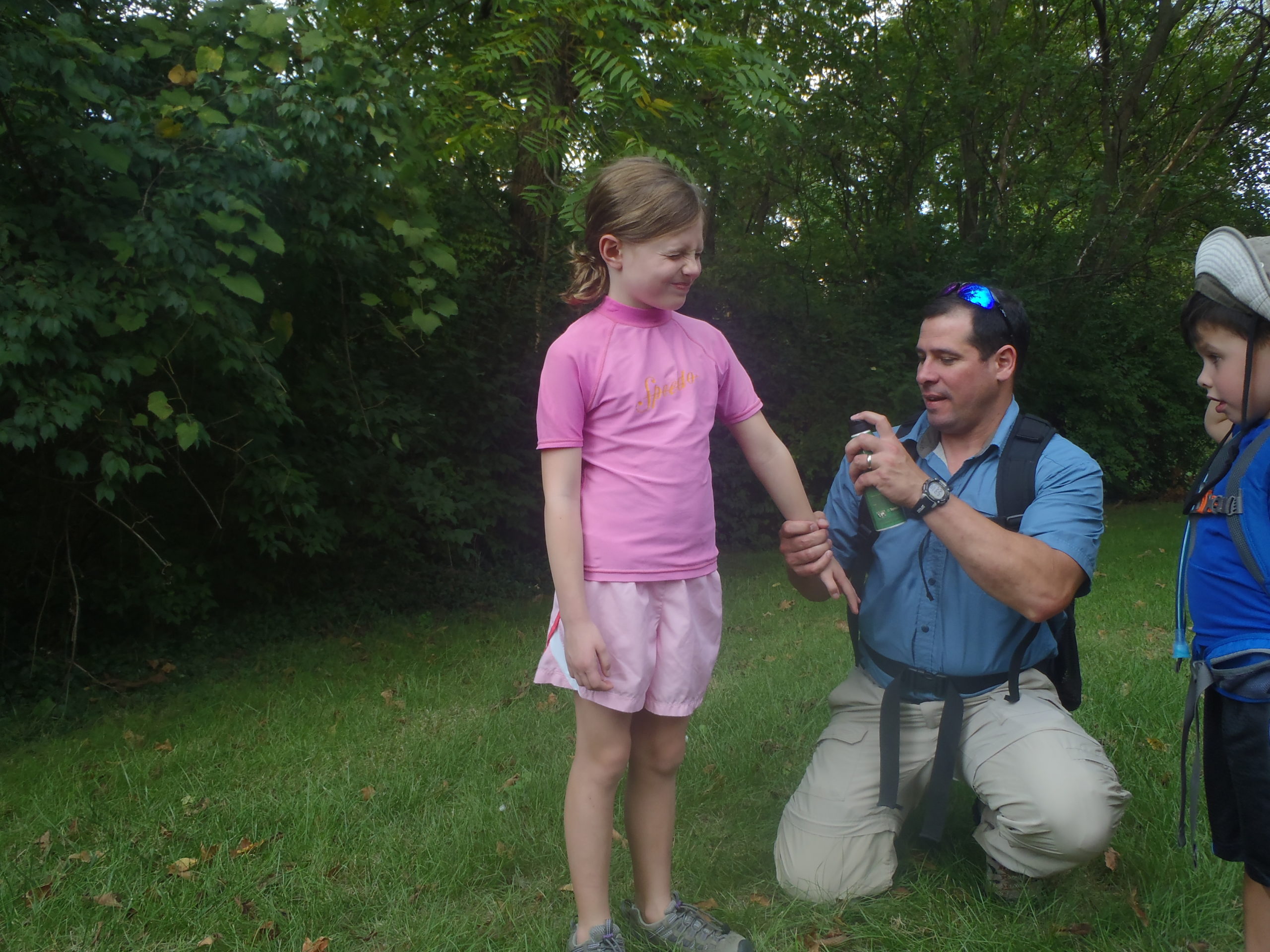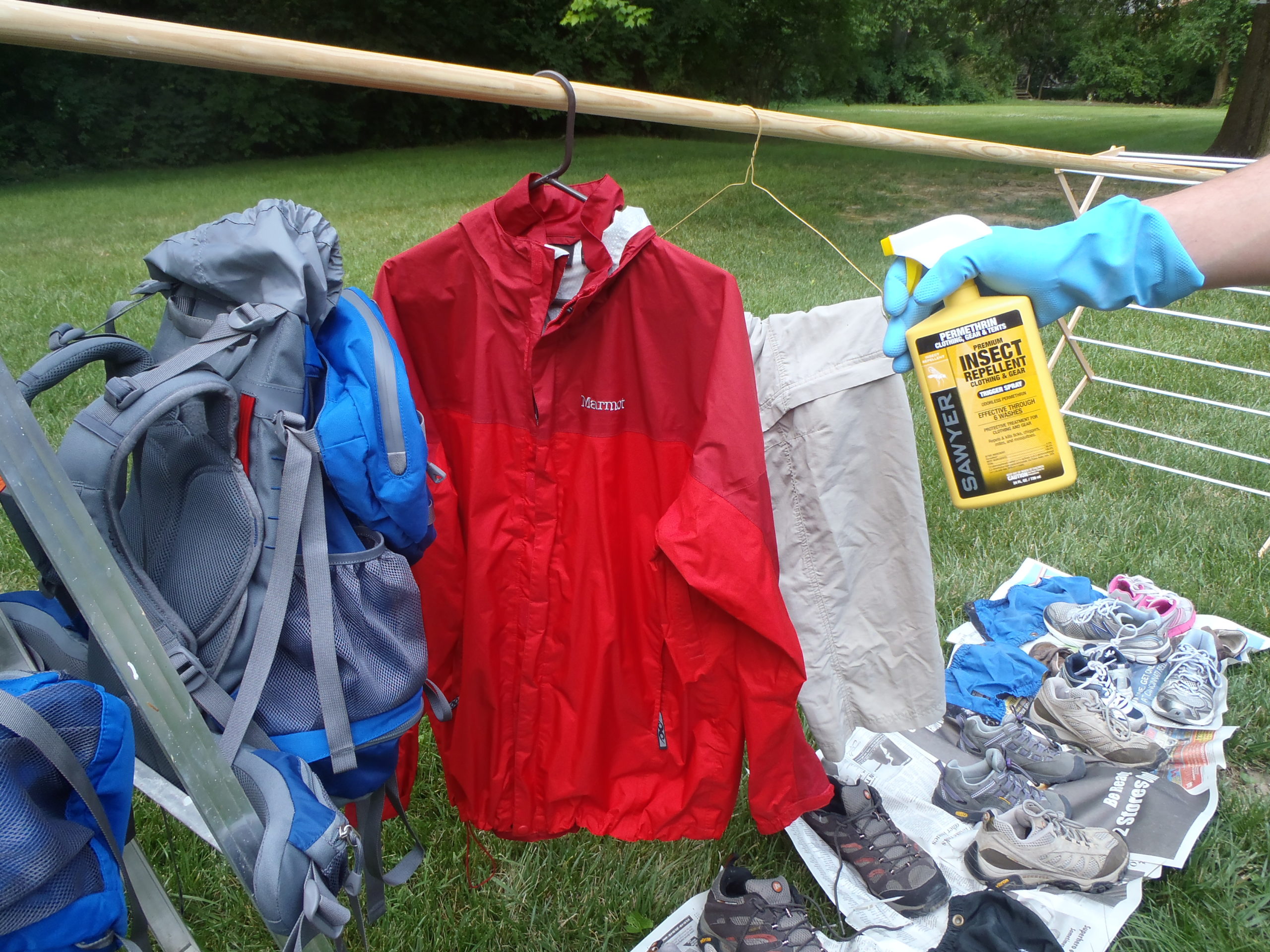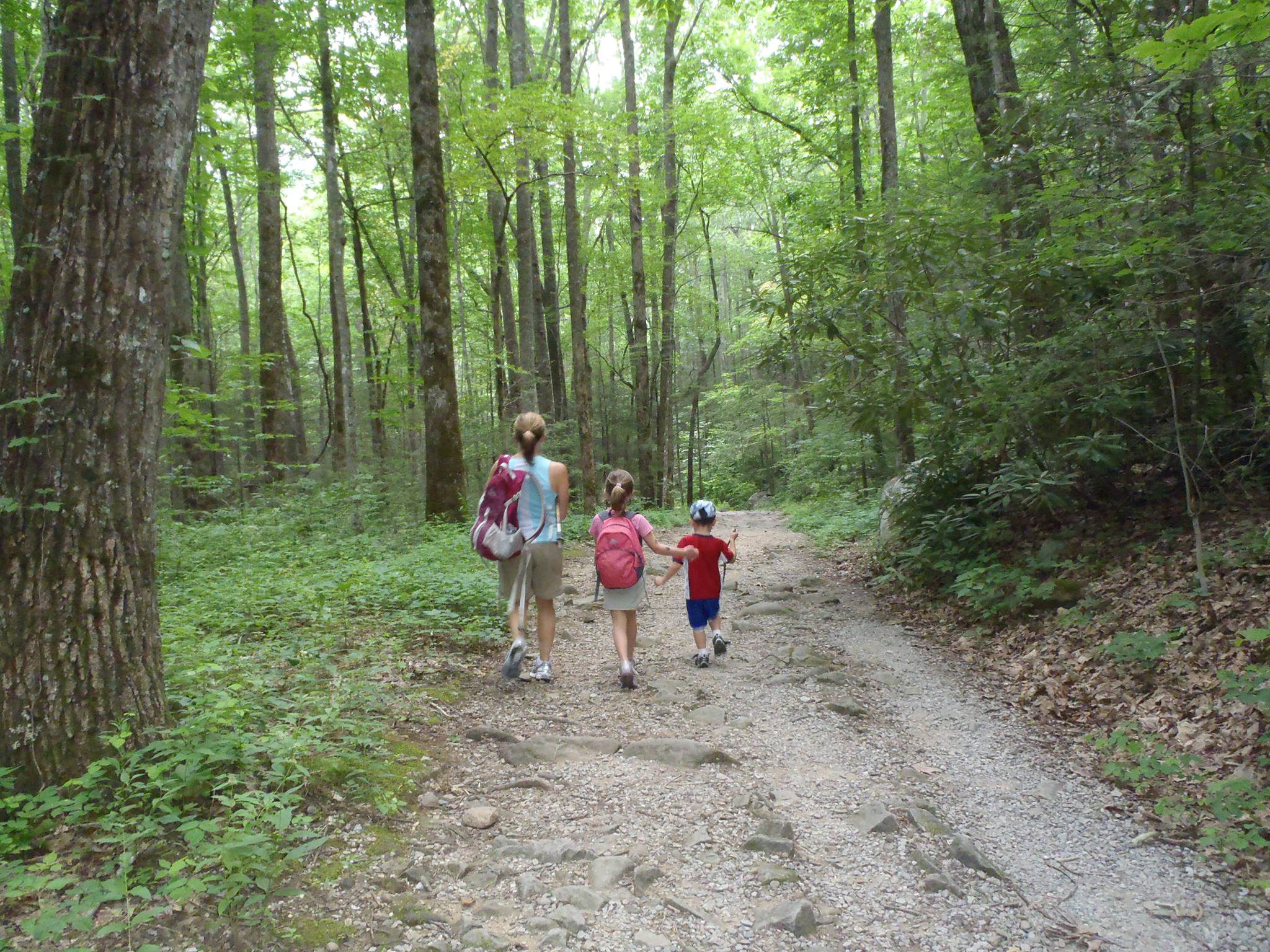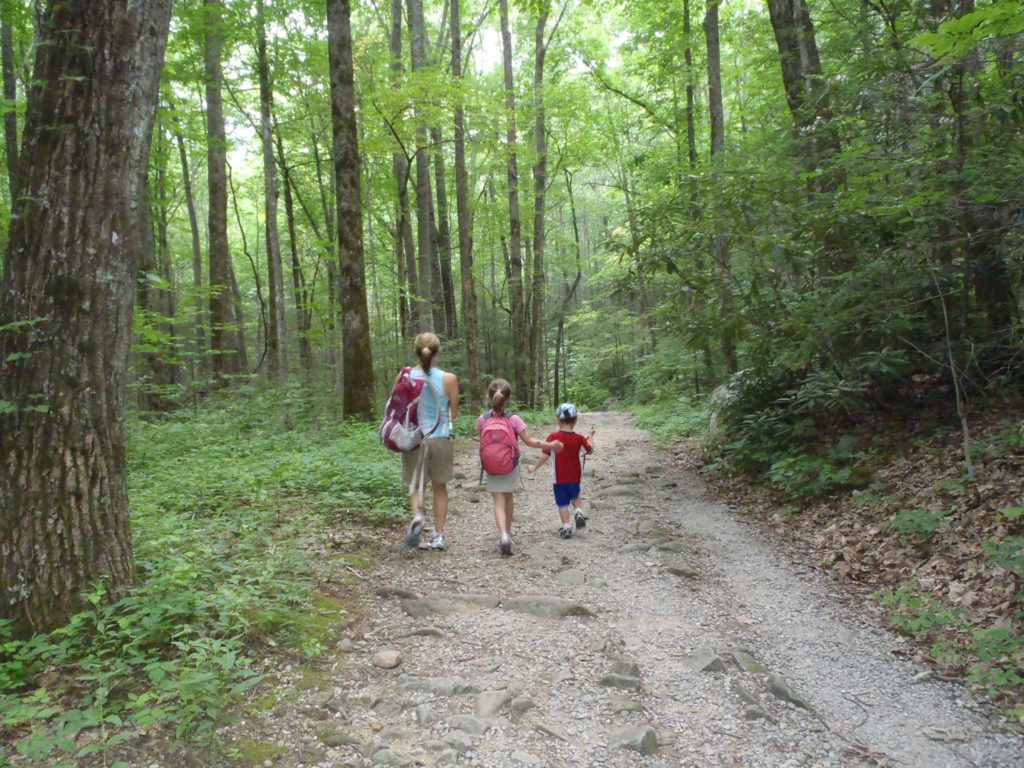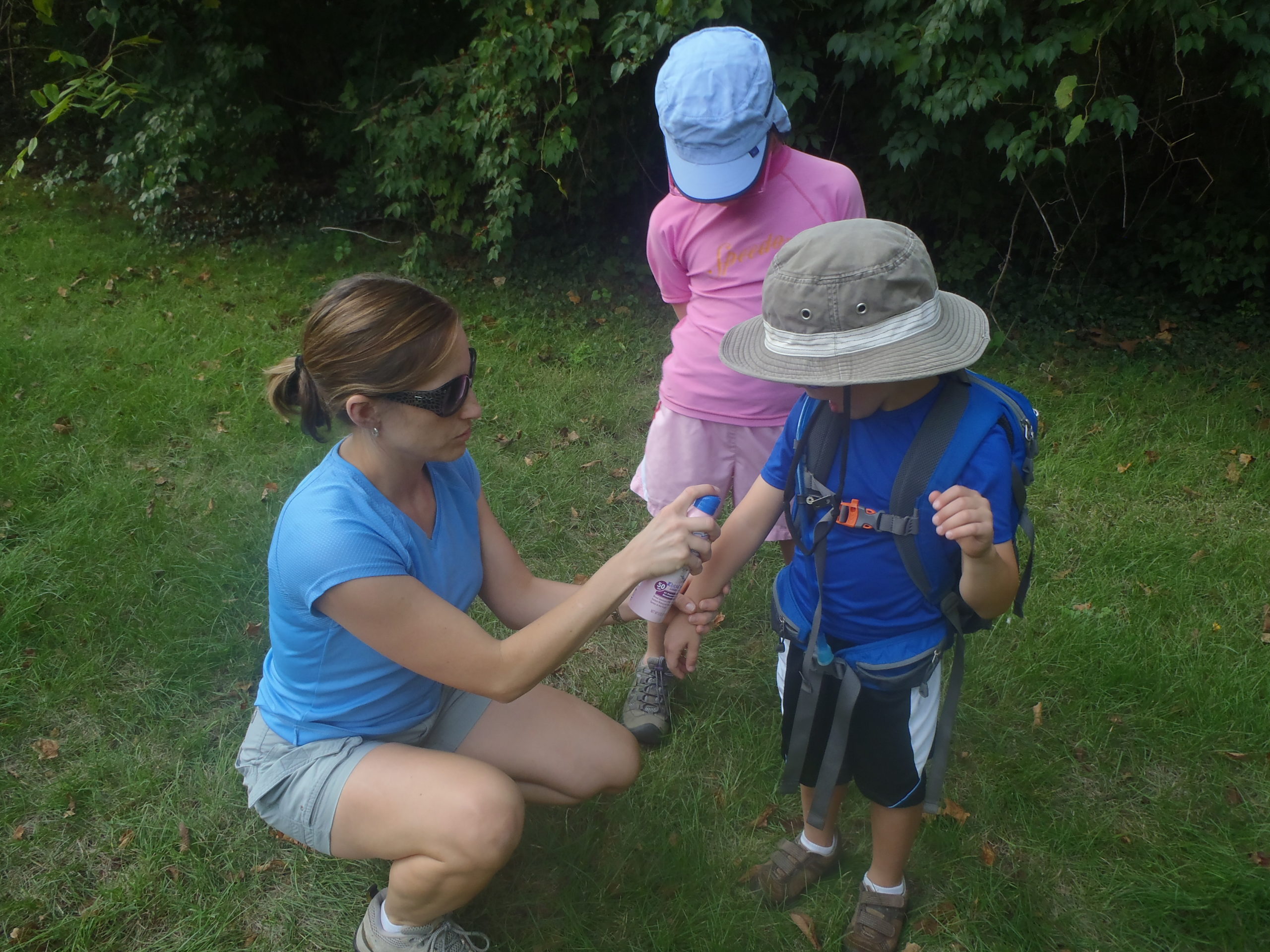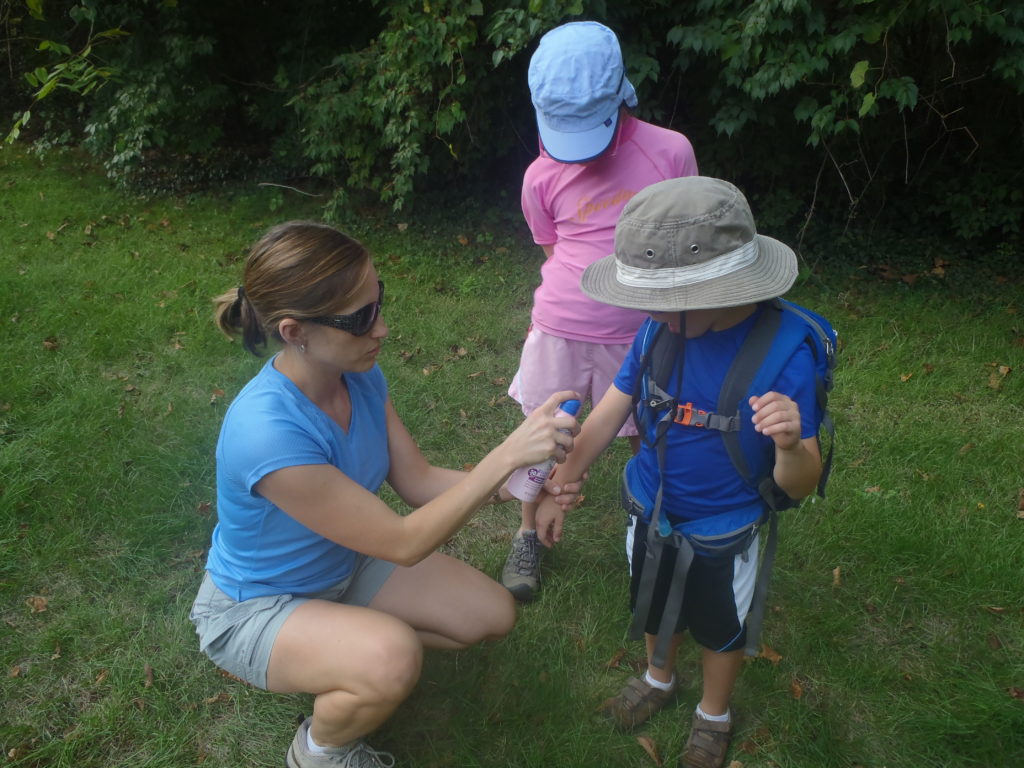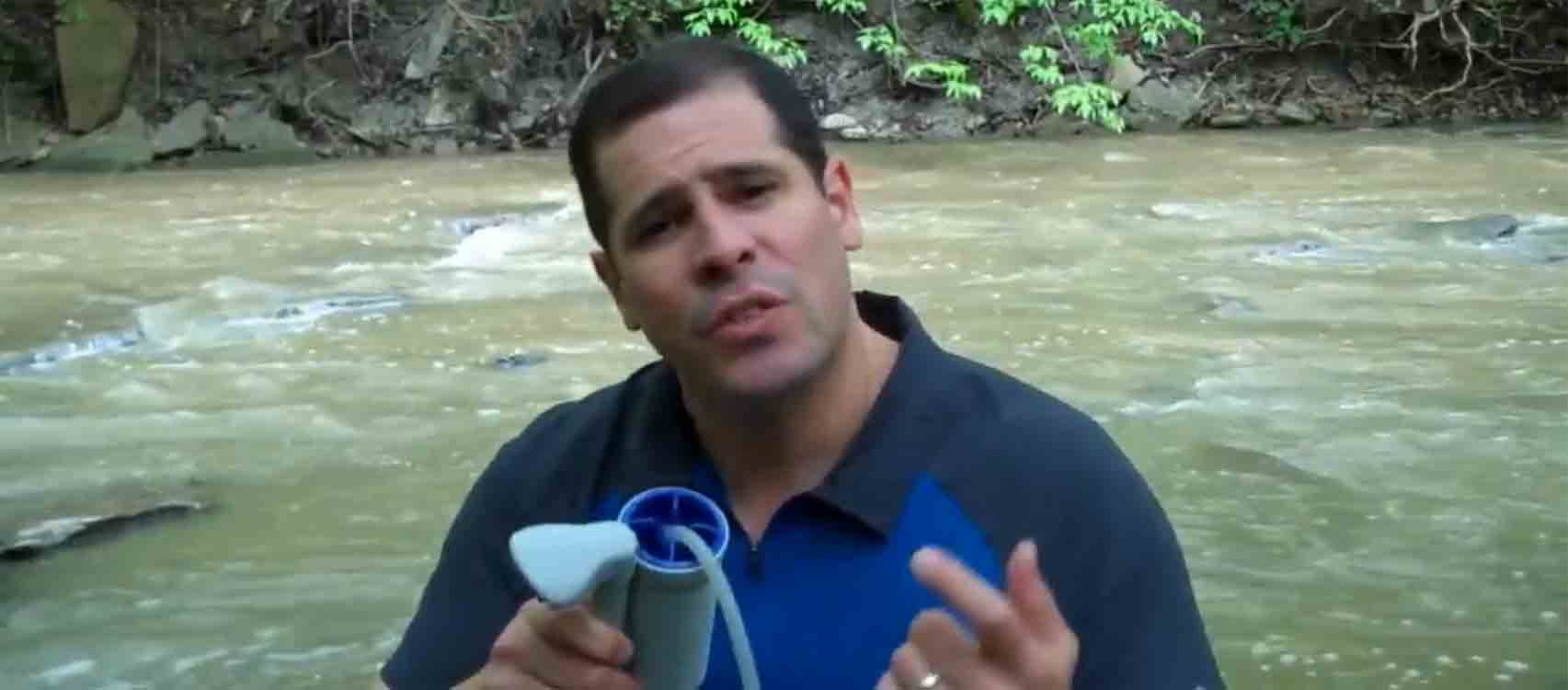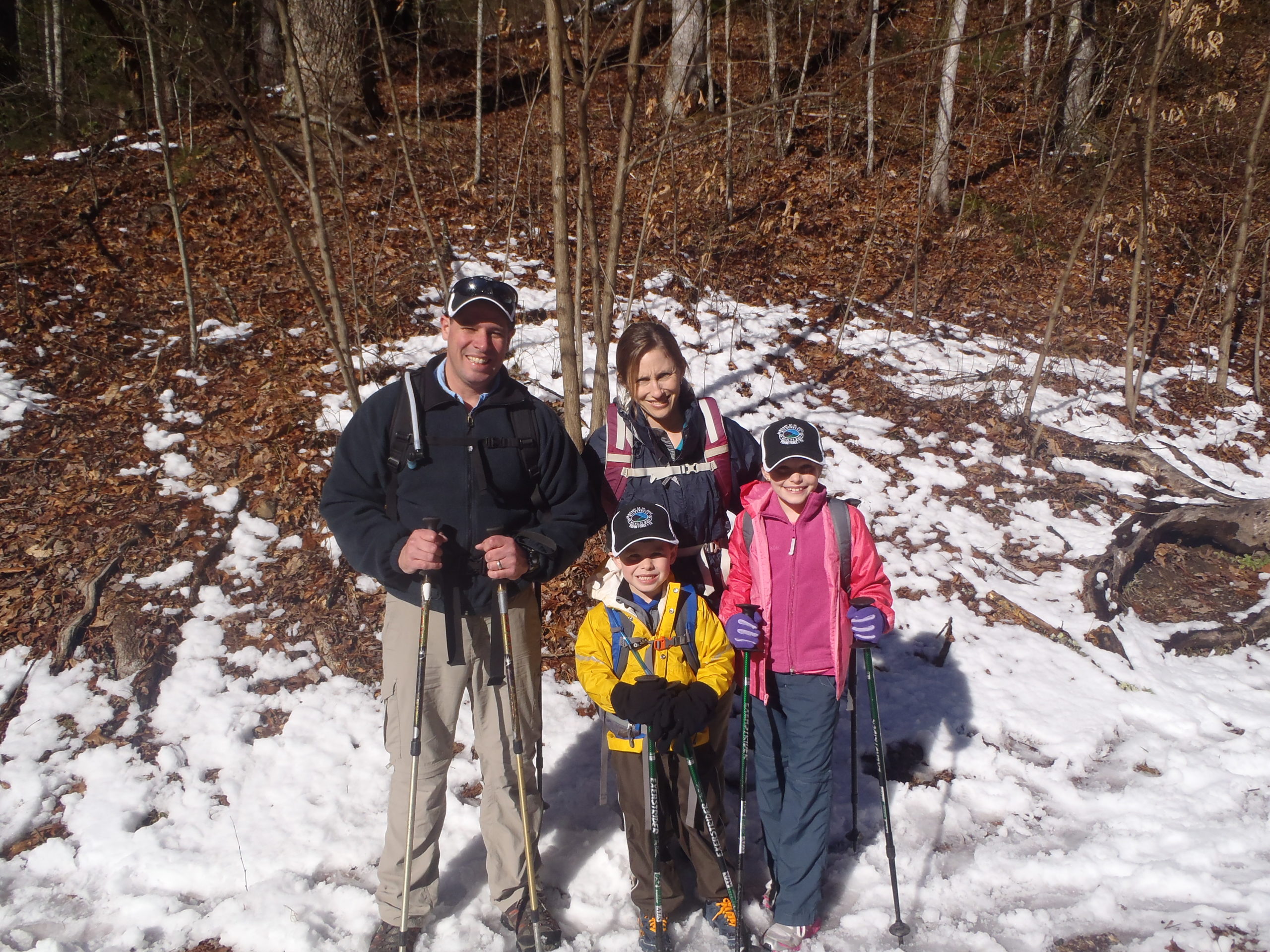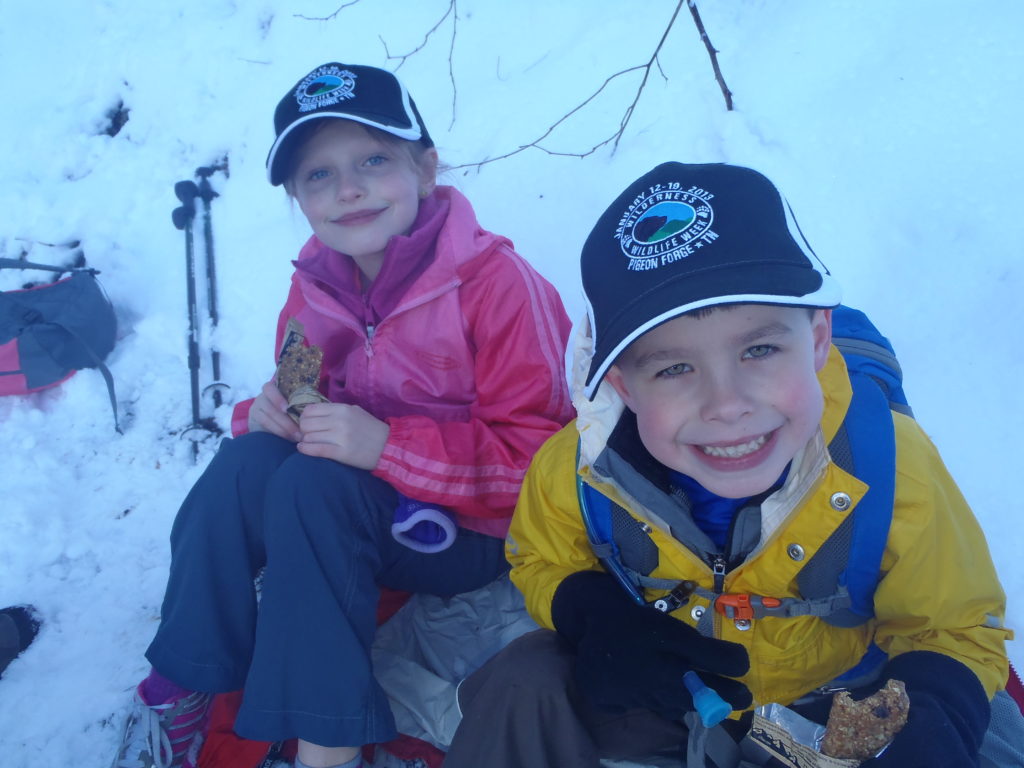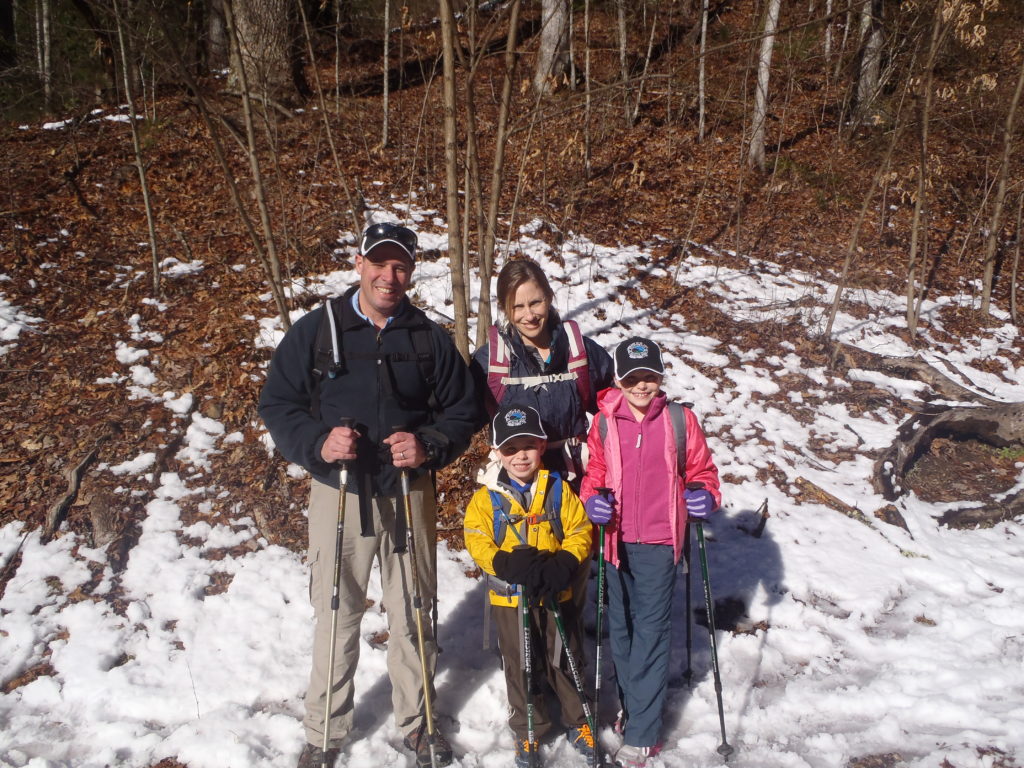Trekking Poles Can Help Your Hike!
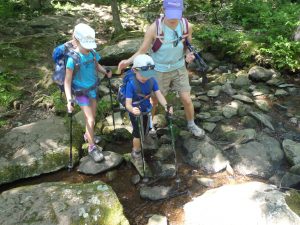 Trekking poles, which look similar to ski poles, add balance and stability while you hike. They move the hiking workout to the upper body and take the impact off your knees; especially when you have the added weight of carrying a child. They can help keep you balanced while fording streams and can even serve as a shelter pole. Kids can benefit from trekking poles too. You will need to teach your children how to use the poles safely. You will need to set the pole height so that your child can comfortably grip the handles while extending his arm out at a 90-degree angle. The poles can easily be adjusted using modern flip lock technology.
Trekking poles, which look similar to ski poles, add balance and stability while you hike. They move the hiking workout to the upper body and take the impact off your knees; especially when you have the added weight of carrying a child. They can help keep you balanced while fording streams and can even serve as a shelter pole. Kids can benefit from trekking poles too. You will need to teach your children how to use the poles safely. You will need to set the pole height so that your child can comfortably grip the handles while extending his arm out at a 90-degree angle. The poles can easily be adjusted using modern flip lock technology.
Trekking pole recommendations:
–Black Diamond’s Ergo Cork (Paid Link) is an excellent choice
–Leki Women’s (Paid Link) is designed especially for women
–Trail Buddy (Paid Link) is priced right and your kids will enjoy picking out their own color

